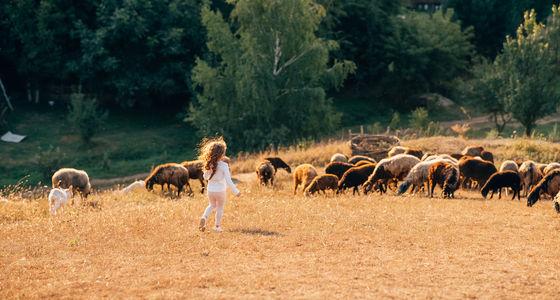The Shire in The Lord of the Rings is not an idyllic and peaceful society. What is the result of an analysis of the Shire's economic and social system?

J.R.R. Tolkien's '
The Moral Economy of the Shire | Goldwag's Journal on Civilization
https://nathangoldwag.wordpress.com/2024/05/31/the-moral-economy-of-the-shire/

The Shire, also known as 'Hobbiton', is a fictional race of hobbits that appear in 'The Hobbit' and 'The Lord of the Rings', and is about 60 to 120 cm tall with pointed ears and fat bodies. The Shire is often cited in memes about 'a rural life that seemed boring and uninteresting in the past but is attractive as an adult', but Mr. Goldwag seems to wonder, 'Is the political economy of the Shire really a comfortable environment?'
Tolkien doesn't go into much detail about the Shire in his work, but 'it's constructed as an idealized version of English rural society,' Goldwag points out. There's a brief description of the Shire at the beginning of The Lord of the Rings, which Goldwag quotes as follows:
There was little 'government' in the shire at that time. Most families managed their own affairs. Growing and eating food occupied most of their time.
In other matters they were essentially generous rather than greedy, content and moderate, so that their estates, farms, workshops and small businesses tended to remain the same for generations.
There are also some things we know about the Shire's system. The Shire originally referred to the land that Argeleb II, the 10th king of the country of Arnor , gave to the Hobbits in 1601 of the Third Age. In return, the Hobbits recognized the King as their lord, and were responsible for maintaining bridges and roads and assisting the King's messengers. Even after the collapse of the Kingdom of Arnor, a chiefdom called Thane was adopted to replace the absent monarch.
In addition, in the shire's main city, Michel Delving, a mayor was elected every seven years, whose main duties were hosting banquets and managing the guard as postmaster and sheriff. This suggests that 'the shire would have had few or no taxes levied by a monarch or mayor. The shire's government was minimal, and the necessary funds would have come from tolls and customs duties on bridges and roads, and voluntary contributions from the elite, as was common in ancient Mediterranean democracies such as Athens,' says Goldwag.

Hobbits are often depicted as being essentially self-sufficient and enjoying agriculture or leisure time, but the shire has a well-developed economy with mills, artisans, large-scale cultivation, and more. Goldwag says the reason for this is that the hobbits depicted in the book are not typical hobbits, but rather members of the landowning class and other socially superior classes in the shire. Therefore, the shire economy seems to have more time and money to support a self-sufficient lifestyle.
This is closer to the traditional system of social organization in the English countryside, in that the landed gentry were not aristocrats and therefore had no legal privileges, and it is distinct from feudal systems such as
Understanding this social structure makes it clear how the Shire is governed. The Shire has no organized government, and is controlled by an elite, such as the landlord class. It is a society organized around the power relationships between families and clans, where power does not come from titles, but from a web of human relationships, including acquaintances, interests, and debts. However, the story also shows that the system in the Shire is relatively relaxed, as the gap between the upper and lower classes is not large and unfair labor such as debt slavery does not exist.

Goldwag adds that an important word for understanding the Shire is '
Hobbits are often depicted as primarily interested in hosting banquets and exchanging gifts, and we know that the Mayor's main job is to host banquets. This sounds like an idyllic way of life, but behind it lies a political and economic structure in which interpersonal connections are key factors in organization.
In his book ' The Peasant Moral Economy: Rebellion and Survival in Southeast Asia ,' American political scientist James C. Scott analyzes the 1930s peasant revolts that occurred in peasant-dominated societies similar to the Shire. According to this, the root cause of the peasant revolts was the collapse of traditional socio-political and cultural norms, or so-called moral economy, due to colonialism and market capitalism. The same thing is thought to have happened in the Shire, and in ' The Return of the King ,' the upper class hobbits who returned from overseas access diplomatic trade outside the Shire framework and invite foreign soldiers to suppress local resistance. As a result, the plot to dominate the Shire was thwarted, but the destroyed traditions never returned completely, and the Shire became a society corrupted to some extent by money and power.

Goldwag points out that the perception that the Shire is an idyllic, utopian life is a mistake and fails to recognize how much work it takes to maintain the Shire lifestyle. Tolkien's Middle-earth is a fictional world, but many parts of it seem to have been constructed from fragments of real history. By analyzing Tolkien's world, including the Shire, Goldwag says it will be an attempt to understand how our past actually functioned, or what society could have been in our past.
Related Posts:
in Note, Posted by log1e_dh







